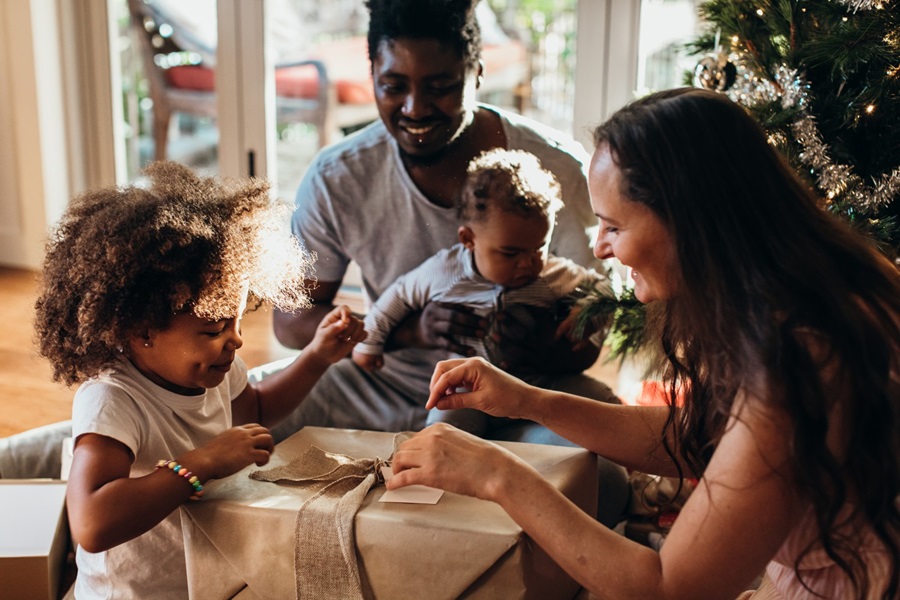Christmas 2019 was like most Christmases in the way that we shopped and celebrated the festive period. Brits spent a whopping extra £2.6 billion in December 20191 in physical retail stores compared to an average month in 2019, as we geared up for the key holiday period, peaking in that final week leading up to Christmas Day.
This Christmas will be different to those gone by. While we will all be hoping that our traditions and rituals can continue, there is also an opportunity to create new ones and challenge the status quo. 55% of shoppers surveyed in late September felt it would be unlikely they would have a ‘normal’ Christmas this year. This was up from 46% in August as the COVID-19 infection rate had begun to rise and regional restrictions put in place.
In addition, one in four consumers is very or extremely concerned about their financial security2. In grocery we see shoppers trading down to supermarket own label lines in recent months as some look to manage precarious financial situations.
Despite this, because we’re consuming more food and drink at home instead of in restaurants or on the go, our latest predictions are that grocery spending for the final quarter of the year will be up 8.4% on 2019 and the 2020 financial year will end with the supermarkets growing at 10.3%3. Behaviours shoppers consistently tell us they’re doing more of are likely to continue as second wave restrictions are in place, including shopping online, scratch cooking and experimenting with recipes.
So, we can expect consumers to shop differently, socialise differently and gift differently this Christmas. Understanding what is important to shoppers is key to addressing their expectations from Christmas 2020 for brands and retailers.
Lifting up gifting
Gifting has been impacted heavily during the lockdown period. Store closures, and families unable to spend quality time together, meant that when people did share a gift, they may have delayed the purchase, bought online, or even made something themselves or created a special moment without buying a lavish present.
For example, looking at Mother’s Day this year – which fell just before the first national lockdown came into force – we found 64% of our panellists changed or cancelled their plans, and for many the event was a washout, with 11% buying fewer gifts as they avoided going out. Instead they plumped for making homemade cards, (19.6%), handmade gifts, (10.6%), breakfast in bed, (12%), and a special meal at home (21.4%). This more sentimental and personal approach to gifts is echoed in other events throughout the year4.
In addition, with stores closed in the spring, gifting moved online. And with it, came the rise of engagement with local and independent gifting e-retailers; ultimately, creating new habits which will impact how we gift this Christmas. Expect to see shoppers supporting local, independent stores and staying within their immediate area, as well as personalised gifts which communicate a stronger human connection and people buying fewer gifts purchased this year.
Sparking festive joy in store
In-store experience, for those shoppers who do plan to venture to the shops this Christmas, is key. Usually, the sheer scale of people treading the pavements out on our high streets in the run up to Christmas can lead to dissatisfaction with our experience. On the other hand, it’s also the time when retailers are pulling out all the stops to tempt shoppers in-store with beautiful displays, experiential activations in store, tempting promotions or high-budget advertising campaigns.
When we look at how shoppers rate their shopping experiences across the physical retailers, we see in Christmas 2019 – and again during lockdown – a general preference away from larger stores which score worse, towards convenience stores which score better5.
This Christmas may therefore see a repeat of the boom in sales seen in smaller, local stores. At the same time, shopping trips are now more considered and planned than ever, with a more active decision-making process in choosing where to shop. Retailers that understand what’s important to their shoppers, and optimise their instore experience, accordingly, will be able to keep shoppers in store for longer and make them more likely to choose that store again.
Checking out online
Against the backdrop of COVID-19 restrictions and shoppers taking fewer non-essential shopping trips, online sales have boomed this year, setting a new high-level mark for retail. As of 29 September, 29% of the UK’s retail spend was online, compared with 16% in February6.
Traditionally, online share of grocery spend drops in December, as we prefer to pick all our Christmas dinner items in store, and we see a similar trend for other categories too as shoppers prefer to shop in store to physically. However, in 2020, we’re already buying popular Christmas categories such as fashion, beauty, entertainment and toys online at higher levels than ever, with all four categories seeing online sales accounting for 49% or more of overall spend in September. With Prime Day last week and Black Friday coming between now and Christmas, alongside colder weather and stricter lockdown measures, this shift to online is only going to increase.
Coupled with the shift to local retailers, the rise of online should result in those local stores with a strong ecommerce platform thriving this Christmas and stealing spend from traditional big box retailers.
The question then is: will we still shop in physical stores this Christmas? How will shoppers decide where to shop? Can retailers meet the increase in demand online for gifting categories? What impact does this recurring trend to push spend online do for the UK as we move into 2021? Agility and the ability to react quickly to movements in shopper footfall and spend through the coming weeks ahead will be essential for retailers and manufacturers to realise the potential for their Christmas plans in 2020.
Notes
- Kantar Worldpanel Plus panel, Total Physical Retail Spend, December 2019
- Kantar, LinkQ Finance & Vulnerability May 2020, FMCG
- Kantar Forecasting Model combining live panel purchasing, consumption and sentiment with assumptions on Government Guidelines to 1 September
- Kantar LinkQ, mobile survey to 33,663 respondents in 2020. Comparable data from 13,462 respondents in 2019.
- Kantar Shopper Satisfaction Tracker, Overall Net Recommend Score, December 2019
- Kantar Worldpanel Plus, Ecommerce data ending 9th Sept 2020, Kantar FMCG Panel 4we 6 September 2020

